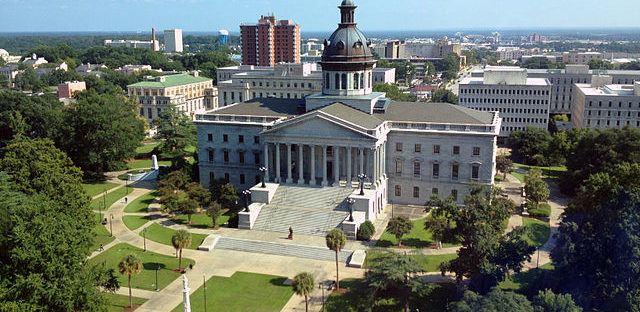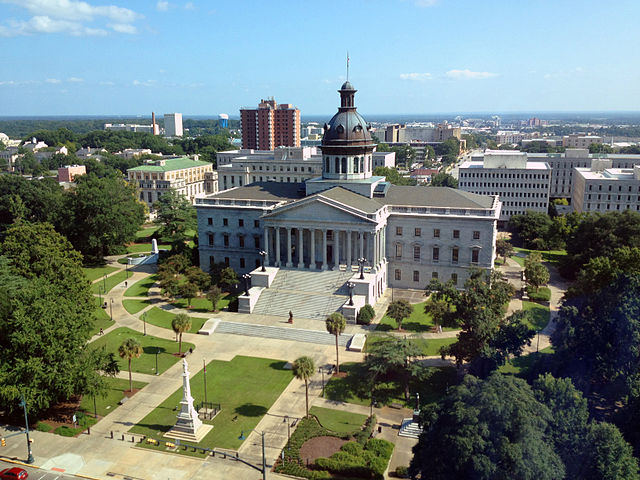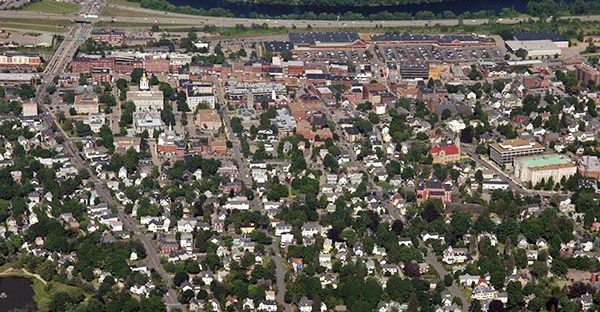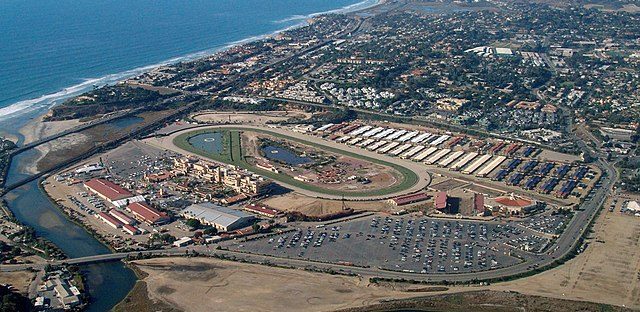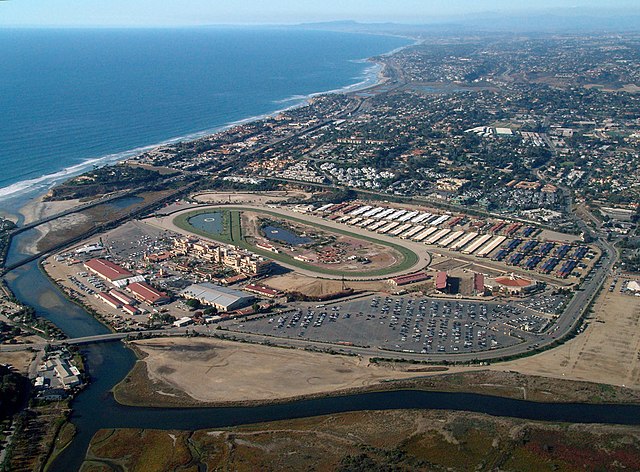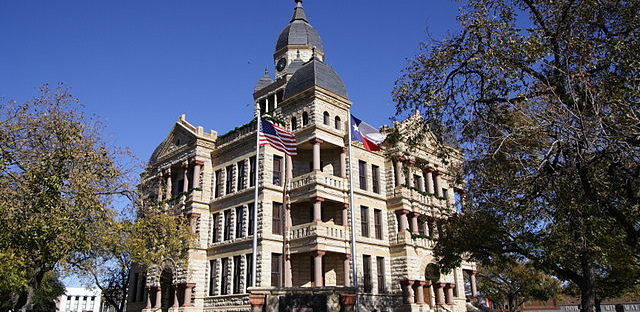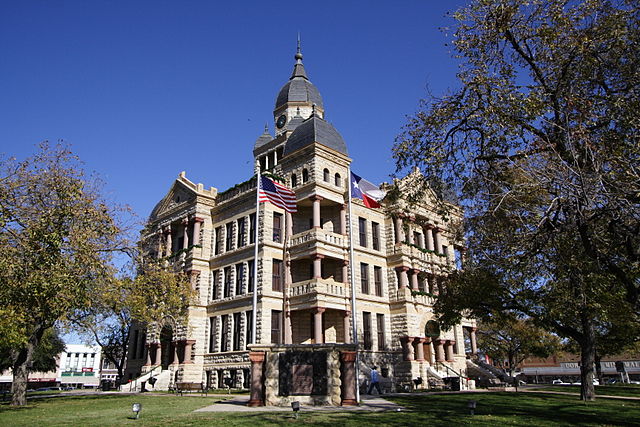- Target: 100% renewable electricity by 2050, reduce residential and commercial energy use 50% by 2030
- Status: In progress
- RES: Offshore wind power industry on Lake Erie, solar power plants on former industrial sites, green buildings
- Implementation: Cleveland was once America’s industrial heartland as well as one of the country's most polluted cities. To transform its image and respond to climate change, Cleveland has pledged to transition to 100% renewable power by 2050. According to Mayor Frank Jackson, the city’s plan is to reduce its carbon emissions to 80% below those in 2020. Actions will create a more sustainable Cleveland and strengthen the city's economy. This will be based on renewable energy projects coupled with battery storage alongside energy efficiency and green buildings. These will lower utility and maintenance costs, incur less risk from energy price volatility, increase property values, improve health and productivity of occupants, and create local jobs. The National Renewable Energy Lab estimates there are enough rooftops in the Cuyahoga County to generate more than 10 times as much solar power. These would meet 44% of the city’s electricity needs, while solar power plants and offshore wind turbines could provide the rest.
Cleveland's two utility companies — Cleveland Public Power and First Energy are important actors in the transition. CPP is adding renewables to its portfolio. Meanwhile renewable energy credits have been purchased by the city to provide for 50,000 homes and 5,000 small businesses in First Energy’s service area. The city has created an Clean Energy Equity plan to help low-income households and small organizations purchase renewables and assist in weatherizing homes.
The city's Climate Action Plan was informed by a 90-person Climate Action Advisory Committee consisting of leaders from community groups. - Population: 383,793 (2018)
- Area: 82.47 sq mi (213.60 km2) city, 3,979 sq mi (10,307 km2) metro
- Link: Sustainable Cleveland
Tag: United States
Columbia, South Carolina, USA
- Target: 100% renewable energy by 2036
- Status: In progress
- RES: Solar energy
- Implementation: As the first municipality in South Carolina to commit to 100% renewable energy, the city of Columbia today powers its municipal buildings with 100% solar energy and all of the traffic lights have been converted to LED. When record downpours in 2015 caused severe flooding in Columbia, destroying roads and dams, causing billions of dollars in damage, and costing 19 people their lives, its Mayor Steve Benjamin pushed to address the growing threat of climate disruption by supporting clean energy legislation at state and local levels. In June 2017, Columbia adopted its clean energy resolution. To meet this goal, the city planned to implement a thorough energy efficiency audit, a solar-powered wastewater facility, and transition municipal operations to 100% renewable energy. These efforts would run parallel to sustainable water management and wastewater infrastructure improvements that are designed to guard against future flooding. Community health was another motivation for the 100% target, as this impacted by fossil-fuel pollution and natural disasters. The resolution also emphasizes economic growth, job creation, and reduced utility costs. The city makes use of the Solarize South Carolina program and legislation that not only lifted the cap on net metering and rooftop solar, but also help increase solar energy–related jobs in Columbia by 46% in just one year (2015-2016). Columbia did face some setbacks - solar legislation stipulated a cap if solar output reached 2% of peak energy production. Rapid growth of solar energy in Columbia and other parts of the state triggered this cap several years sooner than expected, which may have resulted in the loss of many solar-related jobs and a drop in solar power usage. A bill that proposed allowing new customers to install home solar panels failed at the state level. Also, plans to develop a solar-powered wastewater facility were stalled by the 2015 floods, and the local utility backed out. The city has now taken up the project and is looking to redesign and build the facility itself. In December 2017, Columbia became the only city in South Carolina to receive a 3-star certification by STAR Communities, a measure of local sustainability progress against national standards. The city has set a goal to improve its rating from 3 stars to 4 (out of a possible 5) over the next three years.
- Population: 133,451 (2018)
- Area: 134.9 sq mi (349 km2)
- Link: Ready for 100
Concord, New Hampshire, USA
- Target: 100% renewable electricity by 2030, 100% clean energy in all sectors by 2050
- Status: In progress
- RES: Solar and wind power
- Implementation: The state capital of Concord has received strong support from public, private, and faith-based sectors in its goal to achieve a clean energy future, joining three other New Hampshire cities in this quest. The city has begun the planning process to achieve its clean energy goals. On July 9, 2018, the Concord City Council voted unanimously to work toward 100% clean and renewable energy. The resolution already received plenty community support, with endorsements from the State Employees Association, the Unitarian Universalist Church of Concord, the Chamber of Commerce, and the editorial board of The Concord Monitor. The capital’s largest private sector employer, Concord Hospital, was also supportive of the initiative. Concord’s resolution states that Concord Energy and the Environment Advisory Committee will work with the city government to create a stakeholder committee that will help shape Concord’s strategic energy plan. This measure is intended to ensure that every part of the Concord community is able to offer input on the plan, which the city plans to gather through public meetings. Within the first year, the Energy and Environment Committee will lead the development of a strategic plan to establish feasible pathways to complete the transition to 100% clean energy.The city has already taken steps in implementation. It is planning the development of a large solar photovoltaic facility on the city’s closed landfill. It is developing changes to the local zoning ordinance to accommodate the siting of solar projects. It is investigating opportunities to use New Hampshire’s Volkswagen settlement money to invest in electric-vehicle charging infrastructure in the city. It is engaging in discussions with major city institutions, local gas and electric utilities, and state policymakers about how best to achieve the adopted renewable energy goals. Concord is also making use of statewide legislation that promotes clean energy for all New Hampshire residents. These measures include tax incentives for individuals, businesses, and nonprofits, as well as net metering for homeowners using solar- or wind-generated power.
- Population: 43,412 (2018)
- Area: 67.5 sq mi (174.8 km2)
- Link: 100% RENEWABLE ENERGY GOAL STRATEGIC PLAN
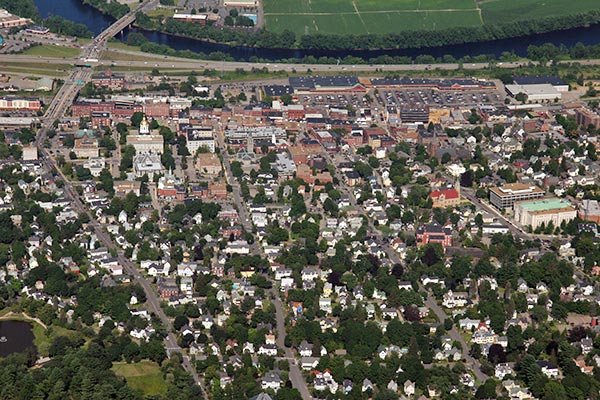
Del Mar, California, USA
- Target: 100% renewable electricity by 2035
- Status: In progress
- RES: Solar energy
- Implementation: Del Mar is a small coastal city in San Diego County, California. In June 2016, its City Council committed by vote to transition the community to 100% renewable electricity by 2035 as part of a municipal climate action plan. The plan includes an interim target of 50% renewable electricity by 2020. Del Mar's 100% renewable electricity goal is in line with the energy goals of neighbouring City of San Diego, as well as the state goal of 80% greenhouse gas emissions reductions below 1990 levels by 2050. This goal also aims to help reduce greenhouse gas emissions to at least 50 percent below the city's baseline 2012 values by 2035.
To achieve 100% renewable electricity, the city is exploring the adoption of a Community Choice Aggregation (CCA) program with either local cities or San Diego County. CCA is a state law in California and several other US states that allow local governments in Investor Owned Utility (IOU) territories to aggregate their community's bulk buying power to procure electricity at best rates on the wholesale market or through direct contracts with power producers, and in turn sell it back to constituents. The IOUs continue to manage and charge fees for grid services. This method has been shown to help local communities procure higher shares of renewable electricity and offer it to their residents and commercial customers at a lower rate than their local IOU.
The City of Del Mar aims to achieve 91% of their renewable electricity supply with a combination of utility scale procurement and distributed solar PV, and the rest using Renewable Energy Credits. Other strategies include encouraging the local IOU (SDG&E ) to achieve 100 percent renewable energy procurement by 2035, installing solar PV on new City Hall and other City facilities, with battery storage systems; introducing EV charging stations and replacing the municipal fleet with e-vehicles. - Population: 4,365 (2016)
- Area: 1.78 sq mi (4.60 km2)
- Link: https://www.delmar.ca.us/680/Go-Green-Del-Mar
Denton, Texas, USA
- Target: 100% renewable energy
- Status: In progress
- RES: Community and utility-scale solar installations and energy storage.
- Implementation: The City of Denton was the second municipality in Texas to commit to transition to 100 percent renewable sources of energy. It began with the City Council revising its Renewable Denton Plan, to include the goal of producing enough energy from renewables to meet 100 percent of its electric needs from contracts with solar and wind developers by 2020. A copy of Denton’s ordinance and staff presentation on the energy plan can be seen here and here. By transitioning to renewable energy, the city aims to save people money on their bills, giving the impetus for city leaders and Denton Municipal Electric to dramatically reduce their reliance on the Gibbons Creek coal plant, as well as ensuring their next renewable energy investments.
- Population: 113,383 (2010)
- Area: 89.316 sq mi (231.33 km2)
- Link: Denton Municipal Electric (DME)
Denver, Colorado, USA
- Target: 100% clean electricity city-wide by 2030 and 30% by 2020 for investor-owned utilities (state targets), 55% renewable energy by 2026 (electric utility - Xcel Energy target)
- Status: In progress
- RES: Solar energy, electric mobility
- Implementation: The City of Denver is teaming up with utility provider Xcel Energy to invest in a greener future for all. In a state historically dominated by coal and fracked gas, Colorado consumers are now demanding more sustainable energy. Xcel Colorado (Public Service Company of Colorado or PSCO) is laying out major investment plans for clean energy infrastructure. When Denver joined nine other Colorado communities in July 2018 in making the commitment to transition to 100% clean, renewable electricity by 2030, it came on the basis of a Climate Action Plan created in 2015 that pledged to reduce carbon emissions by 80% by the year 2050. Under the leadership of Mayor Michael Hancock, the 80x50 Climate Action Plan would go beyond clean power. It would incorporate strategies for land use and development, home and business efficiency upgrades, and mass transit planning to meet the city’s 80% carbon reduction goal. The plan also includes provisions for a community solar program, a net-zero building code for new construction by 2035, and a fleet of 100% electric light-duty vehicles, taxis, and car shares by 2050.Reaching these goals will require strong strategic partnerships. Denver has received support from more than 50 nonprofits and businesses for its clean energy plans. Organisations include the Working Families Party, the Colorado Latino Forum, the Denver NAACP, the Democratic Party, and the Denver Labor Federation. The local utility, PSCO, has recently finalized encouraging agreements with Colorado communities. Given that Denver accounts for 25% of Xcel’s retail sales, the city has been able to act on community pressure urging the utility transition to clean energy. Xcel has since announced plans to replace two units at Colorado’s largest coal plant with a $2.5 billion investment in clean energy generation. The plan is expected to save more than $213 million, while reducing carbon emissions by 59%. By 2026, Xcel plans for 55% of the energy they generate in Colorado to come from renewable sources. As a model for the rest of the country, Colorado is the first state in which the renewable portfolio standard is set by public vote, rather than by legislation; its abundant wind and solar resources make the transition to clean energy both affordable and logical.
- Population: 716,492 (2018)
- Area: 154.97 sq mi (401.36 km2)
- Link: American Cities Climate Challenge: Denver
East Hampton, New York, USA
- Target: 100% renewable energy to meet electricity demand by 2020, and heating and transportation demand by 2030.
- Status: In progress
- RES: Solar energy and wind power.
- Implementation: The town of East Hampton, New York is located in Suffolk County on the eastern end of Long Island's south shore. In May 2014, its Town Board voted unanimously to set the 100% goal, making it the first municipal government on the East Coast of the United States to set such a bold target. The goal was motivated by the need to address rising summer peak demand for electricity and to reduce the need for controversial, unattractive new transmission lines that were beginning to go up in the region. By improving energy efficiency and developing local renewable energy, money and jobs in the local economy would also be better ensured.
The decision was in line with both state and local policy. According to the New York State Executive Order, climate change is to be mitigated by cutting greenhouse gas emissions from all sectors by 80 percent by 2050. In October 2013, the East Hampton Comprehensive Energy Vision was adopted which set specific energy efficiency and renewable energy targets and timelines.
East Hampton is using available incentives for local renewable electricity development. The local utilities Long Island Power Authority (LIPA) and PSEG Long Island (PSEG-LI) offers a 100 MW solar Feed-in-Tariff with a 7 cents per kwh if a minimum of 40 MW of solar proposals were received for the area. Additionally, LIPA/PSEG-LI had issued a 280 MW Request for Proposals (RFP's) for renewable generation. The Town issued RFP's for solar proposals on town-owned land and received about 70 MW worth of proposals under both the feed-in tariff and the RFP. By May 2014, LIPA/PSEG-LI had already selected 32MW of solar proposals to be located in East Hampton.
Wind farms by off-shore wind energy development group Deepwater One are estimated to supply Long Island with over several hundred MW of power. And if all of the projects selected by the town and the proposed offshore wind farm get constructed, the combined energy production from these facilities is estimated to be greater than the East Hampton's annual electricity consumption of 310,000 MWh. Included in this calculation is only 21% of the offshore wind farm's output as it would be shared by five East End towns.
In May 2018, the renewable energy initiative 'Energize East Hampton' was launched to help connect residents and local businesses to programs that help them reduce their energy consumption, and as a result, lower their energy bills. The program also includes a Solarize campaign, which is supported by the State’s NY-Sun initiative with the aim of increasing the number of grid connected rooftop solar PV systems in East Hampton. Residents and businesses can install rooftop solar PV systems at a discounted price offered via the campaign. - Population: 22,009 (2016)
- Area: 386.55 sq mi (1,001.15 km2)
- Link: http://energizeeh.org
Fayetteville, Arkansas, USA
- Target: 100% clean energy city government operations by 2030, city-wide by 2050
- Status: In progress
- RES: Solar energy
- Implementation: As the first city in Arkansas to commit to 100% clean energy, Fayetteville is leading the state in committing to clean energy goals. The City Council adopted the 100% target by7-1 in January 2018. Its mayor, Lioneld Jordan, took the pledge for the city further by adopting a community-wide 100% clean energy commitment as part of the city’s Energy Action Plan, which outlines bold steps to transition the city to 100% renewable energy sources by 2050. The plan lays out goals and strategies for energy efficient transportation, buildings, waste management, carbon emissions reduction, and more. The mayor’s vision is supported by the University of Arkansas, home of the Razorbacks and the city’s largest employer. The city is also continually exploring clean energy solutions with its existing utility companies, Ozarks Electric and SWEPCO. It is simultaneously looking at solar investments and other energy- efficient upgrades for municipal buildings. It is also launching a bike-share program, strategizing to increase urban tree planting, and working out how to use funds from the Volkswagen settlement to invest in electric-vehicle charging stations for its downtown area.
- Population: 86,751 city, 549,128 metro (2018)
- Area: 55.41 sq mi (143.50 km2)
- Link: http://www.fayetteville-ar.gov/3234/Climate-and-Energy
- (Farmers utilising solar in southern Arkansas)
FortZED, Fort Collins, Colorado, USA
- Target: Net Zero Energy District
- Status: In progress
- RES: Solar PV, biogas, storage technologies such as fuel cells, and smart meters.
- Implementation: Fort Collins, Colorado is a municipality located approximately 57 miles north of the state's capitol city of Denver. In 2007, the UniverCity Connections Sustainable Energy Task Force, an initiative of the Community Foundation of Northern Colorado, proposed the development of a "Net Zero Energy District". It would be a district within the municipality that would be a model for generating as much electricity as is consumed with renewable sources, combined with conservation, efficiency, and smart grid technologies. Named FortZED, the new district would cover an area of approximately 2 square miles and include the main campus of Colorado State University and downtown businesses and homes. Although completed in 2014, FortZED already showcased a demonstration project by 2011, a which showed that five businesses in the district could collectively reduce peak-load demand on a micro-grid by more than 20 percent during test periods over more than four weeks. The project combined a range of energy solutions, including efficiency, smart meters, demand response, solar PV, biogas, and storage technologies such as fuel cells. Natural gas was used as back up generation. The project also featured electric vehicle charging stations at city offices, and EV car batteries were considered for backup energy during peak-demand periods. This demonstration project was part of the U.S. Department of Energy's Renewable Distributed Systems Integration program.
FortZED is led by a collaborative team of three entities: Fort Collins Utilities, UniverCity Connections, and the Colorado Clean Energy Cluster, a local economic development organization. Funding sources have included a U.S. Department of Energy grant for $6.3 million, plus nearly $5 million in matching funds and in kind services, along with a $778,000 New Energy Communities grant from Colorado’s Department of Local Affairs and the Colorado Governor’s Energy Office, and $2 million in local matching funds.
Today, FortZED represents about 10 -15% of Fort Collins Utility’s electric distribution system and serves approximately 7,200 residential and commercial electric utility customers. - Population: 164,207 (2016)
- Area: 57.05 sq mi (147.77 km2)
- Link: https://www.fcgov.com/fortzed/
Georgetown, Texas, USA
- Target: Powered by 100 % renewable energy.
- Status: Achieved
- RES: Solar and windpower.
- Implementation: The city of Georgetown in Texas is powered by 100 % renewable energy through long-term deals to supply the city with solar and wind power. The decision was made when it was found that renewable energy would be cheaper and more reliable than fossil fuels. The cost of solar panels had fallen by more than 63 % since 2010, with wind showing similar declines. The intervention would secure fixed electricity rates similar to the current rate of about 9.6 cents per kilowatt-hour and would protect the city against fluctuations in the price of fossil fuels. Renewables would require much less water use than traditional power generation, which is a great advantage in drier states such as Texas. Investing in the city’s own renewable energy sources would also create great local economic opportunities. Many companies, especially those in the high-tech sector, have invested in green sources of power for their office and manufacturing facilities. Georgetown’s 100% renewable power supply have helped companies achieve their sustainability goals at a competitive price. A major success has been the city's agreement with SunEdison, a multinational solar energy company, to purchase the power generated from a 150MW solar farm. The deal with SunEdison will be enough to power more than 24,000 homes every year for the next 25 years. Coupled with a 2014 agreement with EDF to purchase a 140-megawatts wind power plant, Georgetown will be able to meet all of its electricity needs without coal, oil, natural gas, or nuclear power.
- Population: 55,716 (2014)
- Area: 54.3 sq mi (141 km2)
- Link: https://www.theguardian.com/environment/2015/mar/28/georgetown-texas-renewable-green-energy



